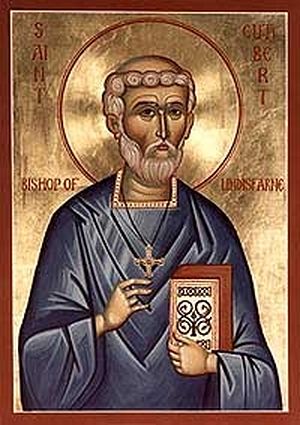 St. Cuthbert
St. Cuthbert
His first Life was written by an anonymous author several years after his repose and in about 720 our great authority the Venerable Bede of Jarrow, wrote his two versions of Cuthbert’s Life: one in prose and one in verse. These are the most reliable sources on the life of our saint. However, apart from them, we have very rich traditions from northern England concerning this saint and several later Lives, written mostly after the Norman Conquest. Notably, Reginald of Durham (+ c. 1190) wrote an account of over 100 posthumous miracles of Cuthbert.
Veneration for St. Cuthbert, his relics and other holy objects associated with him over the centuries is well-documented. At least 135 churches across England are dedicated to him (83 of which are ancient) and a minimum of 17 in Scotland, apart from numerous holy wells both in northern England and Scotland. English people have venerated and honored him as one of their main heavenly intercessors and protectors, and numerous miracles take place through his prayers even now.
Cuthbert possessed a rare spirit of endless love of God, people and every single creation of God, and had kindness, great compassion and zeal in preaching the Gospel; for his humility and loving heart the Lord bestowed on Cuthbert the gifts of prayer, miracles, prophecy, and clairvoyance. His loving and amicable nature attracted the hearts of his contemporaries to him; he was a friend of many other saints of that age, but also of common folk and members of the royal family. For 53 years of his life he was a simple monk, an abbot of monasteries, a teacher, a missionary, for many years—a recluse, and for a short time—even a bishop. His personality combined prayerfulness, love for the solitary life and at the same time he had enormous energy and zeal in spreading the Gospel and helping ordinary people.
He was probably born in 634 in the north of the kingdom of Northumbria in a noble family. His birthplace is not known, though some researchers suggest Dunbar beyond the Scottish border (then part of Northumbria). From the age of eight, Cuthbert was raised by a poor widow called Kenswith in the Scottish Lowlands. She loved him dearly and taught him how to pray. Later Kenswith became a nun of holy life.
Communication with the invisible world of angels ran through his life from early childhood. Thus, as a boy of 7 he used to play noisy outdoor games with other children. Once he got so carried away with an idle game that an angel of God in the guise of a little boy appeared before him and began to cry loudly. Cuthbert tried to calm him down but the boy replied: “Why are you, holy Cuthbert, giving yourself up to light-hearted games that are improper for a priest and bishop? You will not become yourself, unless you direct your mind to spiritual things. For the Lord has ordained you to teach the virtues even to those who are older than you.” From that moment the little Cuthbert became very serious and began to grow spiritually. Several years later an angel in the guise of a horse rider healed the saint from lameness.
Already as a youth Cuthbert worked his first miracles. Even the elements obeyed him. Thus, he once by prayer changed the direction of a strong wind on the river, and the boats with monks who were carrying timber, scattered all over the river, managed to moor on the land very easily. When Cuthbert was 17 he used to tend flocks of sheep high in the hills. Once late in the evening he saw an assembly of angels taking the soul of another great saint to the heavenly dwellings. This was St. Aidan, who had reposed at that very minute (August 31, 651). An extremely beautiful, unearthly singing of angelic choirs could be heard. Young Cuthbert was so impressed by this vision that he immediately and firmly decided to devote all his life to the service of the Lord and become a monk.
Wild animals loved and served the saint during his life. Thus, on the way to his first monastery, Cuthbert spent the night in an old hut, being very hungry. That night his faithful friend—a horse—found hot bread among hay. Cuthbert praised the Creator, ate his half and gave the other half to the horse. Cuthbert’s first monastery, where he was finally tonsured, was Melrose (known also as Old Melrose because after the Norman Conquest there existed a huge Catholic Cistercian monastery on that site, New Melrose, of which impressive numerous ruins survive and where the heart of Robert the Bruce is buried) in the south of Scotland near the English border, but at the time it belonged to Northumbria.
 Melrose Abbey ruins, Scottish Borders (taken from Wikimapia)
Melrose Abbey ruins, Scottish Borders (taken from Wikimapia)
At this monastery Cuthbert’s mentors were two illustrious saints of God: Eata and Boisil. The former was the abbot, the latter—the prior or deputy abbot. When Cuthbert arrived in Melrose, Boisil, who himself had a gift of prophecy, was already waiting for him near the monastery gate and predicted a great future for this young ascetic. Later, when Cuthbert was still quite young, Boisil predicted that he would become a bishop—some 25 years before his consecration!
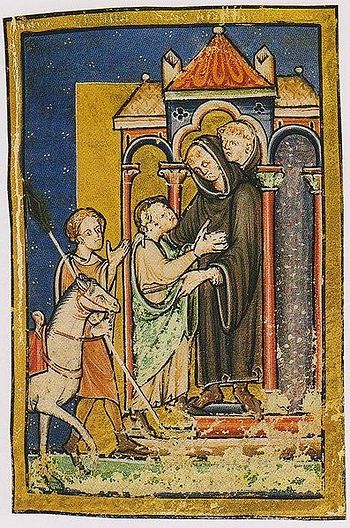 St. Boisil is meeting St. Cuthbert at Melrose Monastery (a miniature of 12th cent., now at the British Library)
St. Boisil is meeting St. Cuthbert at Melrose Monastery (a miniature of 12th cent., now at the British Library)
The first obedience of Cuthbert at Melrose was to receive guests. So one morning Cuthbert, not knowing about this, received and ministered to an angel who was sent him by God. Cuthbert cordially met him, washed his feet, gave him food and drink, but at that moment the guest suddenly disappeared. When Cuthbert looked at the table, he saw that the guest had left white and fragrant loaves on it that were sweeter than honey. Cuthbert’s life was very hard, at times he had to endure the brethren’s slander, frequent attacks of demons and many other hardships, but he always remained peaceful and trusting God. And angels more than once saved him in a visible way, in some cases bringing him food directly from heaven.
At Melrose Cuthbert was the most zealous of the monks and led an austere, inner life. Several years passed. The King of Deira asked St. Eata to found another monastery at Ripon in what is now North Yorkshire. So together with his abbot and brethren Cuthbert moved to Ripon for some time. Among the founders of this monastery was St. Wilfrid, the future Bishop of York and Hexham and enlightener of the kingdom of Sussex. In 661 both Sts. Cuthbert and Eata had to leave Ripon and return to Melrose, because at that time the Roman and Orthodox dating of Easter and form of tonsure were being introduced there, while Sts. Cuthbert and Eata had been originally trained in the Celtic tradition.
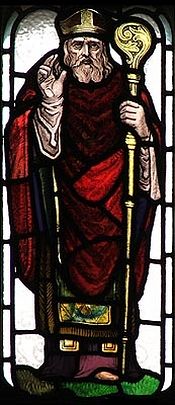 St. Boisil of Melrose (a stained glass)
St. Boisil of Melrose (a stained glass)
Cuthbert frequently spent whole weeks away, reaching even remote settlements in the hills that were difficult of access, and tirelessly evangelized and took care of local people who had been illiterate and pagan. He set them such a good example, that absolutely everybody sincerely turned to God. According to northern traditions, Cuthbert preached throughout northern England and southern Scotland where he founded many churches, chapels and holy wells. With time people from many regions of the country were drawn to him: they came to him with their sorrows, needs, hardships, questions, prayer requests. And Cuthbert listened to all of them, with love and patience instructed and consoled, always finding the necessary words for each person. He directed their minds to righteousness, explaining the harmful consequences of sin and the work of the evil one who always wants to destroy our souls. And he performed hundreds of miracles.
The famous Synod of Whitby was held in 663-664 at which the question of introducing Roman practices to the English Church was discussed. At the Synod, much due to St. Wilfrid and his inspired eloquent speeches, it was finally decided to adopt Roman and Orthodox traditions (especially for calculating Easter and the form of tonsure) because these customs were fully Orthodox and more accurate than the respective Celtic customs. And Sts. Cuthbert and Eata heeded the voice of the Church at once, though they had been educated by Irish monks. Later Cuthbert was to become an important uniting figure in the English Church, gradually reconciling the (first all but opposing) parties of those who adopted the Roman customs with those who stuck to the old Irish rules. And in the example of his own life Cuthbert united the best of these traditions: the disciplined and practical “Romans” and the ascetic and visionary-oriented “Celts”.
After the Synod, in 664 Sts. Cuthbert and Eata moved to Lindisfarne—an island off the northeastern coast of Northumbria, later known as “Holy Island”. It was here that St. Aidan founded a great monastery in 635, which was destined to grow into one of the most important centers of asceticism, preaching and culture in the whole of Britain and Europe. Eata arrived in Lindisfarne as abbot (while retaining his duties as abbot of Melrose at the same time), and Cuthbert—as prior. For twelve years Cuthbert remained prior (and according to tradition, later abbot) of Lindisfarne. First, Cuthbert was asked to teach the rules of monastic life to the Lindisfarne monks. Cuthbert carried out his duties with great energy, love and patience at the same time.
Little by little he introduced very strict discipline and monastic rules to the monastery—he lived precisely such a life himself—and became a real father to his brethren. And he continued his missionary work, which stretched to such places as Durham and Carlisle. But he more and more wished for a solitary life as a hermit. So he first retired to the isle today known as St. Cuthbert’s Island, and then, in 676, he settled on Inner Farne (both isles belong to the group of the Farne Islands which are famous for their wild nature and colonies of many species of birds today). On Inner Farne he built himself a little hut and a chapel and constructed a high wall around them (he was a physically very strong and skillful man).
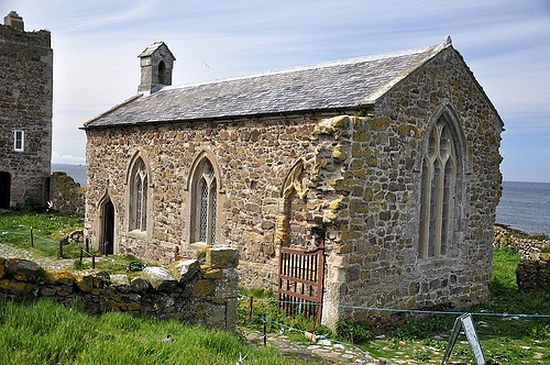 St. Cuthbert's Chapel on Inner Farne (photo by Mark Harrison)
St. Cuthbert's Chapel on Inner Farne (photo by Mark Harrison)
At first he did not want any visitors to come to him, wishing to see only the sky, the heaven for which he strove so much. The saint lived in extremely difficult conditions on Farne, but nothing was impossible for him because God and the angels were always nearby. The saint by his fervent prayer expelled all the demons from Farne, who for some time attacked him ferociously. He also provided food for himself by the labor of his hands: through his prayer the soil on Farne became fertile and he was able to grow barley there, and a holy well with an abundant amount of water gushed forth from a dry rock on the isle due to his prayers. With time monks from Lindisfarne and other monasteries, nevertheless, started to flock to him and inhabitants from outside Lindisfarne followed too, in spite of the remoteness of that site. And Cuthbert, though he tried to avoid fame, could not refuse them wise instruction and words of consolation.
At York, on Easter Sunday 685, Cuthbert was against his will consecrated bishop. That was a unanimous decision of the Church Council at Twyford (now in Berkshire). The consecration was performed by St. Theodore of Canterbury and six other hierarchs. The saint long refused, wept and said that he was unworthy. Even the king tried to persuade him to become an archpastor. And only when the Lord revealed that this was His will did he agree to become a bishop. It was planned to appoint Cuthbert Bishop of Hexham, but Sts. Cuthbert and Eata agreed to exchange the sees, so Eata became Bishop of Hexham and Cuthbert became Bishop of Lindisfarne. Two years later, after diligent and illustrious labors as a bishop, Cuthbert reposed peacefully on Inner Farne on March 20 (April 2), 6871, at the age of 53. Several months before his death the saint had returned to his beloved way of life on Inner Farne.
Let us now mention some fascinating examples of Cuthbert’s holiness from the Life written by Bede. Living at the monastery, Cuthbert so loved to pray that he could stay up three or four nights without sleep for unceasing prayer. But he concealed this from others, as he did not want people to venerate him as a saint. However, once a monk decided to follow him at night. The monk saw how the man of God left his cell, descended to the sea, went into the cold water and all night long prayed there with his arms outstretched. As soon as he came back ashore, sea otters approached him and as a token of reverence dried his feet with their warm fur, and the saint blessed them. The observing monk was shocked. During the day the clairvoyant saint came up to the monk, gently rebuked him and asked him not to reveal this miracle until his (Cuthbert’s) death. Since then this saint has often been depicted with otters near him.
Once St. Cuthbert with his two novices arrived on a very remote island, not bringing any food with them. The weather was fine and quiet, but on their arrival a very heavy storm and gale began. The sea had been extremely rough already for three days and the travelers were dying of hunger. The companions were in great sorrow but Cuthbert encouraged them to pray hard, saying, “Have faith and learn to trust in God, my dears. I am convinced that He will not let us die now and will provide food.” And at once the men found on the shore three pieces of dolphin flesh, as if they had been specially cut and cooked for them, and the weather calmed down completely. All thanked God for His mercy.
Another time Cuthbert with one youth set out on a long journey, but they lost their way, and the weather became bad. Cuthbert called on the youth to set his hopes on the Lord alone. And they instantly saw an eagle bringing them a large fish and laying it in front of them. Cuthbert ordered his companion to divide the fish into two halves and give one to the eagle. Soon they found a house by its light and fried and shared the rest of the huge fish with the hosts. On two occasions the holy man put out huge fires that could have burned down whole villages. On the first occasion it was the village where his foster-mother Kenswith lived. Despite the general despair, the saint imperturbably lay on the ground and prayed ardently—and every single house was saved. On another occasion it was an unnatural fire started by satan. Cuthbert drove the evil one away and told the locals to be more attentive and not to yield to temptation. All his life Cuthbert struggled with the devil and demons who vexed him, cast stones at him, flung him on the shore and tried to throw him down a cliff. At length, by his fasting, prayer and humility the saint banished all the demons from the neighborhood.
Cuthbert prayed for all and had the gift of tears; he saw the sufferings and sins of people and shed tears because of this, himself doing penance for their sins. He exhorted people, persuading them to love God and their neighbor; otherwise our soul is an easy target for the devil. He served the Divine Liturgy with tears and the people felt the presence of God each time he served; his face was often transformed and became filled with light as he prayed. Cuthbert healed sick people even at distances: thus, once he expelled a demon from the wife of a judge with whom he was talking, even though the judge did not mention his wife’s illness and the latter was many miles away.
Some modern researchers suggest that St. Cuthbert was the first man in history to speak up in defense of wild nature, in his case: eider ducks. Maybe this is just a legend, but it is certain that he took care of these birds during his life and they still nest on Inner Farne in masses, as if in memory of the great saint. Northumbrians call these eider ducks “chicken of Cuddy” after St. Cuthbert. According to Bede, when Cuthbert first sowed seeds of barley on Inner Farne, birds started pecking them. The saint reproached them for that and they did not do it again. Two ravens used to steal straw from the small guesthouse near the saint’s cell. Cuthbert ordered them to leave the isle for such behavior. But the ravens soon returned with their wings prostrated and the heads lifted low as a sign of their remorse. More than that, they brought him lard to atone for their guilt. The saint forgave them, allowed them to stay on the isle and used the lard to waterproof his shoes. He often remembered that story in conversations with the faithful, pointing out that if even birds hurry to repent, then our duty is to give full repentance and cleanse ourselves from our sins.
Even the elements served the saint, full of the grace of God. Once the brethren forgot to deliver wood to him as he had asked; the saint prayed, and the sea overnight “brought” him the log of exactly the right size to the shore. Cuthbert healed the sick not only by prayer, but with prosphora (consecrated bread), holy oil (thus he healed a girl with a sore head and side), and holy water. Often even his personal belongings cured various diseases. Once the holy Abbess Elflaed of Whitby along with her novice were cured from headache by St. Cuthbert’s belt: the saint delivered his belt to them through a stranger, having heard their prayer at a distance of many miles.
He was also a prophet. Thus, he predicted to the queen that her brother, the king, would fall in battle with pagans and revealed to her who would be the next king. Cuthbert in spirit observed the whole battle and saw the murder of the king, though he was not present at that event himself. There are very touching stories telling how during epidemics of the plague and other diseases, Cuthbert walked to village after village, cared for the infected and the dying, gave them communion, not fearing to contract the disease—and remained sound himself. On one occasion he brought back to life a youth, who had just died of the plague and lay at the roadside. On another occasion Cuthbert returned to life the little son of a woman who came to him all in tears with her dead son in her hands. Cuthbert kissed him and the child came back to life at once. He also promised the mother that nobody else would die in their family from the plague; and both the mother and son lived for many years after that.
Once Cuthbert was visiting the convent of a devout abbess, and during dinner he suddenly stopped and fell deep into thought, so that even the knife fell from his hand. When asked what happened, he said that he had seen in spirit a monastery worker, who was strong in faith, accidentally falling to his death from a tree, and angels taking his soul right to Paradise. The grace that abode in Cuthbert was so abundant that once in the monastery he tasted water and it obtained the flavor of wine; all the witnesses drank this water after him and said that its taste was that of the best wine one could imagine.
Sometimes Cuthbert showed others that obedience to an elder or saint is necessary even in minor things. Once he told the disciples who were visiting him to eat the goose hanging in the guestroom and then set off for home by sea. But the guests ignored his command and were about to leave the island straightaway. But a violent tempest rose on the sea and continued for three days. On the third day they came up to the saint’s hermitage and knocked. He opened and expressed his surprise that they were still there. Learning what had happened, he shamed them for their carelessness. Only then did the men realize their fault; they cooked and ate the goose, taking his blessing and then safely departed home.
One of Cuthbert’s closest friends was a priest of holy life called Herbert. He lived on an isle in Derwentwater in Cumbria. Now this is in the Lake District national park. It is a landscape with great beauty, which has attracted many painters, poets and writers, one of whom is the famous children’s author and scientist Beatrix Potter (1866-1943). St. Herbert lived there as hermit and St. Cuthbert used to visit him every year, when they conversed about spiritual things together. Shortly before his death, when revisiting his diocese, its churches and monasteries, Cuthbert came to his old friend Herbert as well. When he revealed to him that he would die soon, Herbert asked him to pray so that they could depart from this world together at the same time, as they had served and glorified God together as true “soul-friends”,2 as the Celtic ascetic described those who were connected by ties of spiritual closeness. St. Cuthbert agreed and both saints reposed on the same day and hour. The feast of St. Herbert is celebrated on the same day as St. Cuthbert. Today the isle where he lived is called St. Herbert’s Island, and some ruins of his cell still can be traced there. It is a destination of pilgrimages (it is situated within the town of Keswick).
Before his death Cuthbert suffered from a painful ailment. But even on his deathbed he performed miracles: he healed a novice from his years-old chronic disease by touching the edge of his clothes. After St. Cuthbert’s repose even the soil in which his body lay or a mixture of a handful of this earth with water cured people—for example, a demoniac boy. Cuthbert’s boots returned health to a paralytic after the saint’s death. Another ascetic was healed of a skin disease from the calfskin that had hung at St. Cuthbert’s cell in his lifetime.
Let us speak about the veneration of St. Cuthbert. In 698, eleven years after Cuthbert’s repose the saint’s incorrupt relics were uncovered. They were kept on Lindisfarne, as the saint willed. Soon his Lives by an anonymous author and by Bede were written, and this contributed to a wider veneration of him. In the eighth century the holy man was honored and loved already throughout England and in many countries of Western Europe, and his name can be found in many early calendars in both Britain and the continent. Pilgrims not only from England, but also from faraway lands came to pray at the relics of St. Cuthbert.
From the late eighth century on, the Vikings made regular raids on English monasteries, including Lindisfarne. Thus, in 875 Lindisfarne monks were forced to leave their monastery and, together with all shrines and relics, set out seeking a new refuge. The monks travelled and stopped in several places in north England and Scotland, including Northam, Crayke, Ripon and finally stayed at Chester-le-Street for 100 years. But only in 995 did they find the right place for the relics. It was said that as they were moving the tomb of St. Cuthbert became immovable at a certain moment. They started fasting and the saint appeared to them in a dream commanding them to carry his body to Dunholm, but nobody knew where that was. Soon the monks met a milkmaid who complained that her dun cow had disappeared but she saw it last time at Dunholm. She led the brethren to that place and it was decided to found there a community and to keep relics of St. Cuthbert and other saints there.
With time the place was called Durham; a town grew around the community, and soon after the Norman Conquest a large monastery was founded there which was to become perhaps the most visited English holy site for centuries. Since 1083 Durham has been a bishop’s see as well. The relics of St. Cuthbert were translated into a new shrine at the Durham “priory-cathedral” in 1104—and then they were absolutely intact. Afterwards the relics rested behind the altar. The chapel with nine altars where St. Cuthbert’s shrine was placed was built in 1235, and in 1372 a splendid new shrine was built of marble and plaster, and richly gilded. Apart from St. Cuthbert the monastery-cathedral had the shrine with the relics of St. Bede.
St. Cuthbert remained the most venerated saint of England down the centuries, rivaling only Archbishop Thomas Becket from the late twelfth century. Many illustrated versions of his Life were produced, and countless miracles occurred near his relics, visited by the nobility and common folk alike. Before the Battle of Neville Cross in 1346, the saint was believed to have appeared to the prior of Durham in a vision and command him to take the cloth from his shrine, attach it to a spear and carry it as a banner to the battlefield. The monks did this and prayed during the battle near the spear not far from the opposing sides and felt protected by Cuthbert. From that time on the “Banner of St. Cuthbert” was always taken to battlefields with the Scots until the Reformation.
In the Middle Ages, Cuthbert was the protector of the territory known as the county palatine, or the palatinate of Durham. It was semi-autonomous, and the role of Bishop of Durham was like the role of the king in the area. Ordinary people with sincere faith always venerated Cuthbert, asked for his advice and consolation. The saint was the center, the symbol of the national unity, uniting the people particularly during the calamities and wars.
In the 1530s the Reformation began in England. As opposed to Germany and other countries, in England this process of quick destruction of Church traditions and immersion into Protestantism was imposed “from above”, i.e. from the king. By orders of Henry VIII hundreds of monasteries were closed, then robbed and destroyed, thousands of unique ancient relics were demolished and burned by cruel blasphemer-iconoclasts, among them icons, statues and relics of most of the saints. The damage done by the “reformers” in England took place over a very short period. It was even much more substantial than the damage done to relics by the Communists in twentieth-century Russia.
Authorized representatives of the king came to Durham Cathedral-monastery, to remove all church valuables and riches, including St. Cuthbert’s shrine in which they expected to find nothing but “treasures and dust”. According to the surviving documents, one representative came up to the shrine, intending to open it, take all the treasures, and break it into pieces. But having opened the lid he nearly fainted. The following picture appeared before him: he saw the saint’s body perfectly preserved, safe and sound, in full vestments—as if he had served his last Liturgy the day before. All his limbs were soft and flexible, even warm, and, most importantly, an unearthly fragrance spread in the air around his body. The man called another representative but he refused to believe him until he came to the shrine himself and was convinced.
Nevertheless the shrine was partly looted and desecrated; one of the saint’s legs was broken… These people, who “reformed” the Church, did not believe that this was a great saint on whom the grace of God rested. Cuthbert’s body was secretly buried within the Cathedral on the site of the old altar. So the remains of such a great saint were temporarily lost for England… Together with Church unity, about whose preservation the saint himself had been so concerned. Durham has been used as an Anglican Cathedral since that time. In 1827 the relics of St. Cuthbert were raised and examined together with other holy objects associated with him. His skeleton was well preserved, and what is believed to be the head of St. Oswald of Northumbria was discovered. The main relics of the saint were reburied in two outer coffins and they rest under a simple marked stone slab at the east end of the Cathedral behind the high altar to this day, attracting believers, Miracles continue to happen.
This part of the Cathedral is called the feretory, which means a shrine chapel (the relics of St. Bede are buried in the Galilee Chapel at the Cathedral’s west end). Other relics associated with the saint are his original wooden coffin dating back to 698 (in fact only fragments of it survived, which were reassembled and renovated early in the twentieth century), the saint’s pectoral cross, portable altar, vestments (stole, maniple, girdle, etc.) of Byzantine silk, cloths, an ivory comb, among other things.These minor relics are at the cathedral and were on display in the treasures exhibition until 2012 when they were placed in a secure store in the cathedral while extensive refurbishments of the medieval buildings has been taking place to create new exhibition facilities. Later in 2016 the cathedral anticipates arrival of new specially designed display cases for all these relics and from 2017 on they will be displayed in the cathedral’s medieval great kitchen. In 1593 a book called the Rites of Durham appeared. Its author was an unnamed monk and server of Durham Cathedral who lived shortly before and after the Reformation. This book, which still survives, is a rare and unique source for early monastic life and organization of the monastery that existed in Durham before the Dissolution. The monastery was one of the most important ones in England. The book describes the rooms, interior, shrines, tombs, services, festivals, traditions, rules and everyday life of monastery monks and workers.
Several Orthodox parishes have St. Cuthbert as their patron. They include the joint Russian and Greek community of Sts. Cuthbert and Bede in Durham, the Russian parish in Truro (Cornwall), and the parish of the Patriarchate of Constantinople of the Russian tradition serving in Chesterfield (Derbyshire) and Sheffield (South Yorkshire) alternately. Most historic Anglican churches dedicated to St. Cuthbert are concentrated in the six northern counties of England, though some are in such faraway regions as East Anglia, Somerset and Cornwall. In the late twelfth century, Reginald of Durham testified that the three most venerated saints of England at the time were Cuthbert, Edmund and Etheldreda (all of whose relics remained incorrupt for a very long time).
There are two priceless ancient manuscripts closely connected with St. Cuthbert. One of them is the so-called Lindisfarne Gospels: it contains texts of the Gospels of the four Evangelists, written in an Insular script (translated into old English in the tenth century), with inimitable interline decorations, portraits of Evangelists with their names written in Greek in Latin letters; the work was made in early English, Irish Celtic and Mediterranean styles. The illuminated Lindisfarne Gospels were most probably created by St. Eadfrith, Bishop of Lindisfarne in 698-721, in memory of St. Cuthbert, and illustrated by the holy ascetic Billfrith in the late eighth century.
Another manuscript is called St. Cuthbert’s Gospel, or the Stonyhurst Gospel (because it for some time belonged to Stonyhurst College in England). It is a unique and tiny Gospel of St. John with elaborate binding decorations made on goatskin. The text is written in Latin; the book size is only 138 millimeters x 92 millimeters. The Gospel may have belonged to St. Cuthbert himself, though according to another version it was created after his repose by Wearmouth and Jarrow monks in his memory. Both manuscripts have been preserved in good condition to this day. For many centuries they lay in St. Cuthbert’s coffin. Now these real gems of the Christian world are kept at the British Library. In 2013 and 2014 the Gospels were displayed at Durham Cathedral.
The history of the Lindisfarne Gospel is as turbulent as the history of the saint’s holy relics. According to tradition, when Lindisfarne monks were travelling with the relics, fleeing from Vikings, they intended to go to Ireland but bad weather prevented them from doing this. At that time the Gospel book fell into the Irish Sea but was discovered at Whithorn on the fourth day absolutely safe, with only several saltwater stains! Since then it has been nicknamed “the book of St. Cuthbert which fell into the sea”.
Today the memory of St. Cuthbert is alive in England and Scotland, especially in the places where he was active. Holy Island, or Lindisfarne, together with Inner Farne are destinations for Orthodox, Catholic and Anglican pilgrimages. The ancient cell of St. Cuthbert, along with St. Cuthbert’s Chapel (which were later used by Benedictine hermits as well) still partly survive on Inner Farne.
In iconography St. Cuthbert is often depicted in bishop’s vestments with a halo, with swans serving him, as a hermit fed by an eagle, praying in the sea, with otters, seals or birds (usually eider ducks) near his feet, with other saints (like Aidan and Herbert).
The saint is the patron of shepherds and sailors: he often appeared in the midst of the raging ocean to people seized by disaster; in apparitions he usually uses his episcopal staff as an oar in order to warn sailors of imminent shipwreck. As the saint fearlessly entered the homes of people infected by the bubonic plague, his name was also invoked against this disease. Traces of the once universal veneration of St. Cuthbert can be seen in the names of an enormous number of churches, monuments, towns and other toponyms, crosses, areas, schools, and colleges that are named after him or contain his name as part of their names. He is one of the few early saints who are liturgically venerated not only by Orthodox and Catholics, but also by some Protestants. He is depicted on the stained glass windows of many English cathedrals and parish churches, including York, Carlisle and Gloucester Cathedrals.
He is often portrayed as a bishop holding a head with two crowns (this is the head of St. Oswald the Martyr—because they were buried together, and because Oswald was a king on earth and received a heavenly crown after his martyrdom). Such places as the former Scottish county Kirkcudbrightshire and the town of Kirkcudbright (“church of Cuthbert”), the village of Cotherstone in County Durham, the village of Cubert in Cornwall, the hamlet of Holme St. Cuthbert in Cumbria, the parish of St. Cuthbert Out in Somerset derived their names from our saint.
The Norman Cathedral of Christ, the Mother of God and St. Cuthbert, standing in the city of Durham on the River Wear, is perhaps the most popular pilgrimage site in modern-day England. This is the most complete Norman Cathedral in the country; its main part was built within 40 years, beginning in the late eleventh century. Numerous former monastic buildings around the cloisters are extant to this day and are used for various purposes. The city also has a heritage center museum telling of local history, including that of Durham as a pilgrimage center over the centuries. There is a St. Cuthbert’s holy well between the Cathedral and the river, situated down the steep bank near the museum of archaeology, though it is difficult to access.
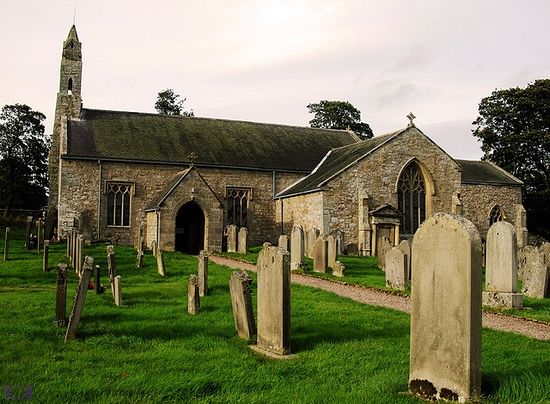 St. Cuthbert's Church in Elsdon
St. Cuthbert's Church in Elsdon
Not far from Durham there is St. John’s Church in the village of Escomb—it was most probably built in about 675 by Northumbrian missionaries and is considered to be the most complete early English church still in use. Among other churches connected with St. Cuthbert that are of considerable importance let us mention the Church of Sts. Mary and Cuthbert in the town of Chester-le-Street in County Durham (it was here that his relics were kept for over 100 years; the wooden church was replaced by the stone one in 1054—it stands there to this day. Its tower is 48 feet high. In the Middle Ages the church contained a little hermit’s cell inside, which still survives); St. Cuthbert’s Church in Elsdon village in Northumberland (it is very big. According to tradition, the saint’s relics rested here for a short time while the monks were hiding them from pirates); the ancient St. Cuthbert’s Church in High Ackworth village in West Yorkshire (local tradition claims that here the saint’s body rested for a time during the Danish raids too); and St. Cuthbert’s Church in Darlington in County Durham.
There are also St. Cuthbert’s Church and holy well in Bellingham in Northumberland (the well was discovered by the saint himself and many healing miracles occurred here); St. Cuthbert’s Church in Redmarshall in county Durham; the St. Cuthbert’s Church and school in Halsall in Lancashire;
St. Cuthbert’s Church in the city of Wells in Somerset (the first church on this site was Saxon; its tower is 43 feet high; due to its huge size the church is often mistakenly referred to as a “Cathedral”); St. Cuthbert’s Church in Thetford in Norfolk with its extremely interesting interior; St. Cuthbert’s Church in Bewcastle in Cumbria (its churchyard has a unique seventh-eighth-century early decorated cross, one of the finest surviving crosses of this kind, and the sundial on its side is the oldest in England); and St. Cuthbert’s Church in Crayke in North Yorkshire (St. Cuthbert visited this site himself and may have founded a monastery here; later a holy priest-hermit called Echa lived there).
Then there are the Priory Church of Our Lady and St. Cuthbert in Worksop in Nottinghamshire (the well-preserved former monastic church of the Augustinian priory which existed here in the Middle Ages). A number of churches within Carlisle, a county town of Cumbria, are dedicated to St. Cuthbert, who founded a monastery here during his travels (then the city was called Luguvalium). The most famous St. Cuthbert’s Church of Scotland is situated in its capital of Edinburgh. The present fine church was built in the nineteenth century and it is presumed that the first church on the site was erected by the saint himself. Two caves associated with St. Cuthbert can be found at Holburn in the Kyloe Hills near Lindisfarne in Northumberland and at Doddington in the same county—either the saint lived in them for some time as a hermit before moving to Inner Farne, or Lindisfarne monks hid his relics there from Vikings.
It was said that Cuthbert had a chapel, holy well and cross at Dull (in the Perth and Kinross area) in Scotland where he lived for some time as a recluse in the cave. The miracle-working well still exists, though it is now dedicated to St. David. St. Cuthbert’s Church still stands nearby—though it is now redundant—and it contains a part of the original Cuthbert’s cross. The church and well are close to the village of Weem near Dull. Churches dedicated to St. Cuthbert can also be found in such countries as USA and Australia. “St. Cuthbert’s Way” is a walking pilgrimage route embracing 100 kilometers (c. 62.5 miles) which is devoted to the memory of the saint: it begins from the ruins of Melrose Abbey and ends at the ruins of Lindisfarne Priory.
Holy Father Cuthbert, Wonderworker of England, pray to God for us!

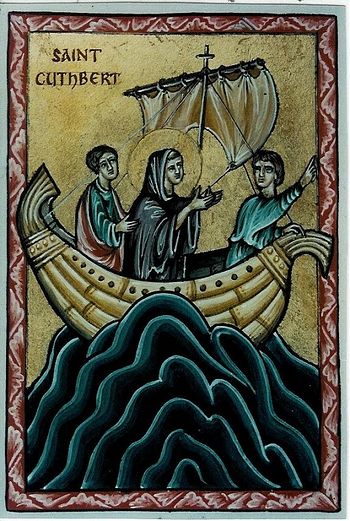
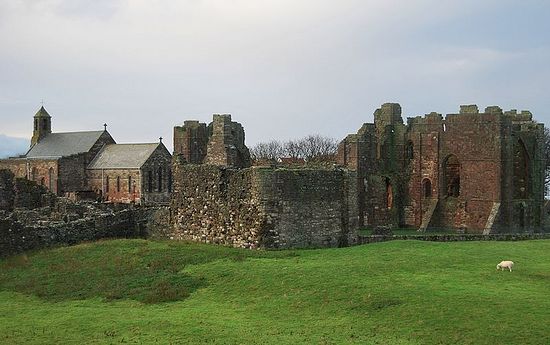

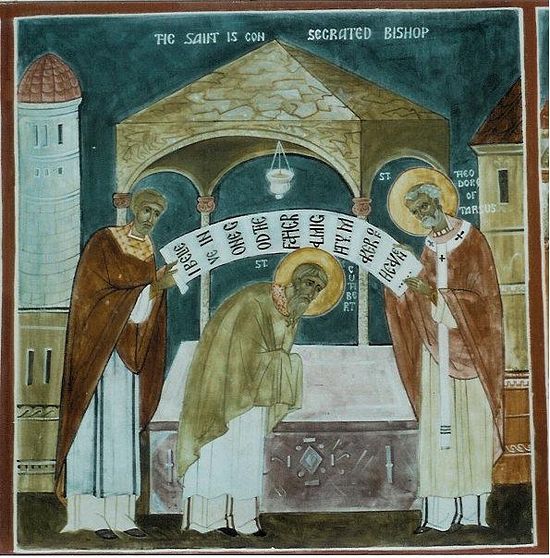
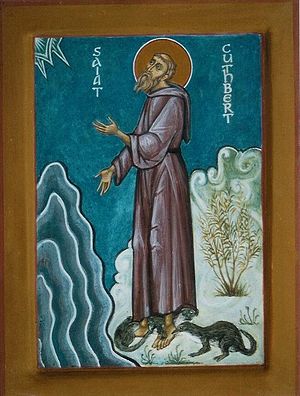
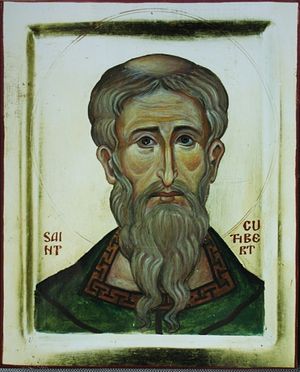

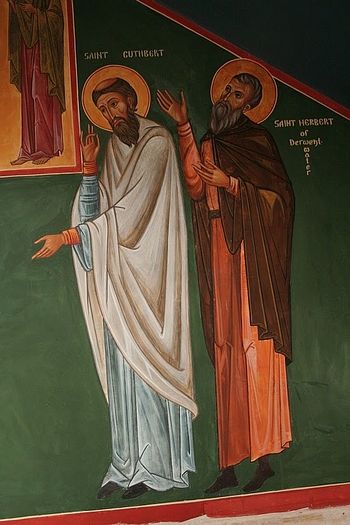
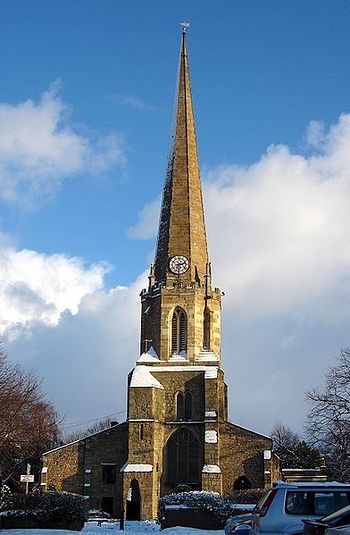
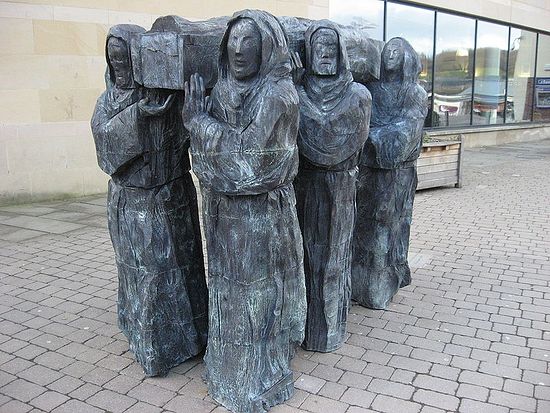
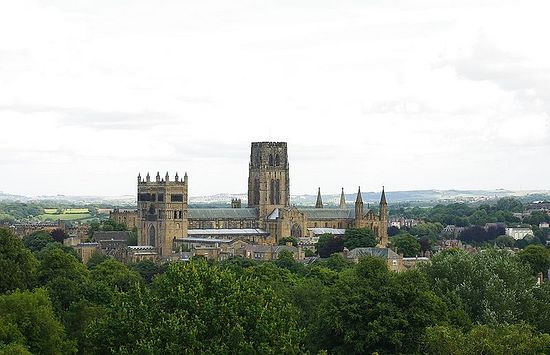
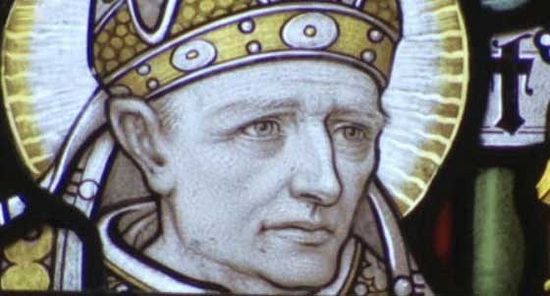
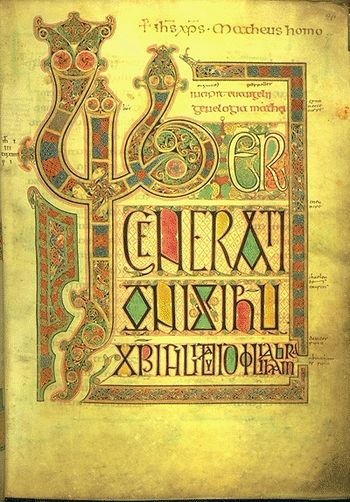
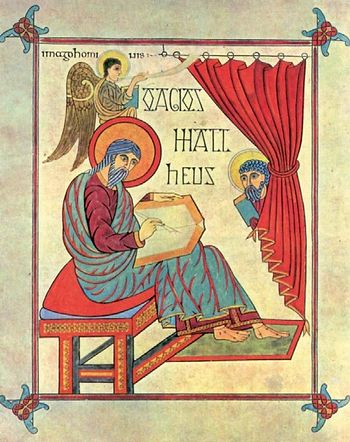
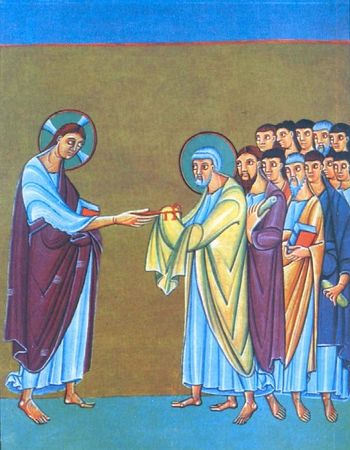
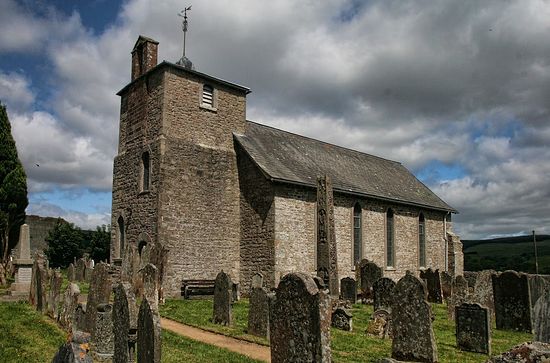
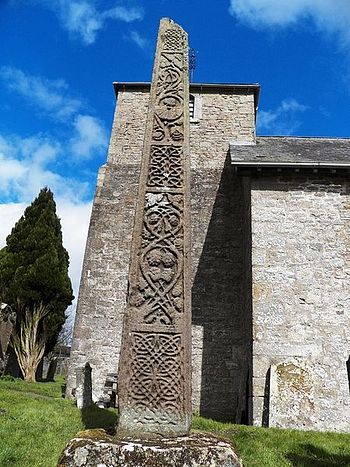
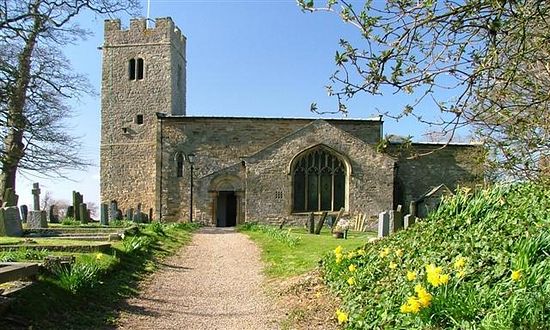
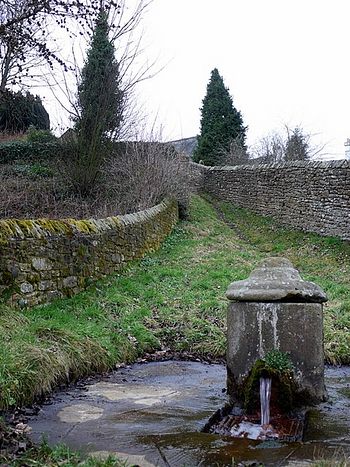
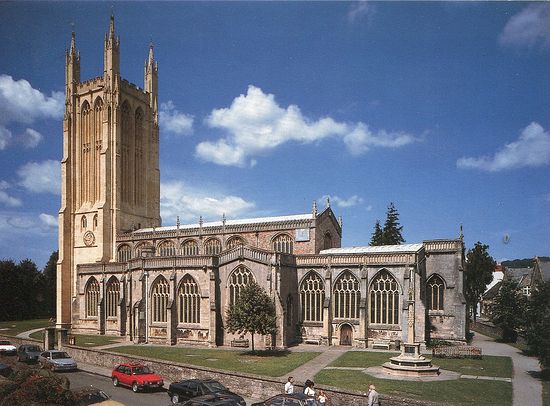
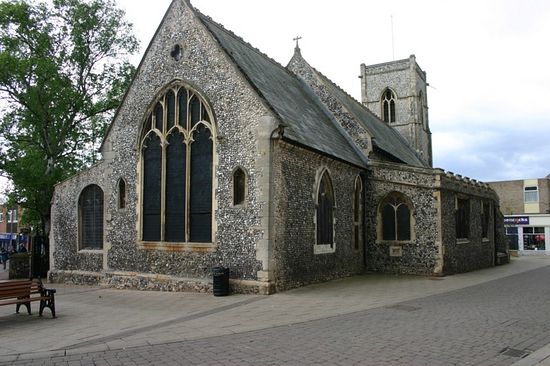
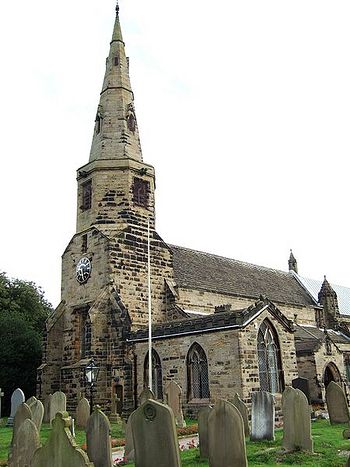
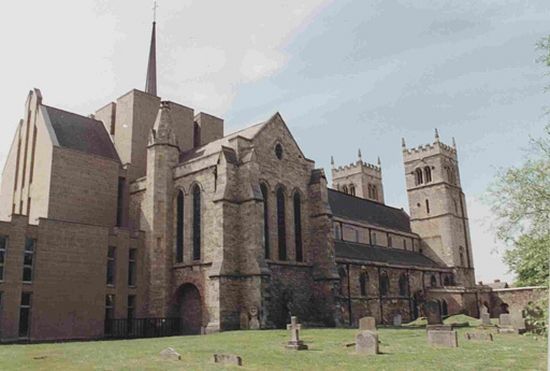
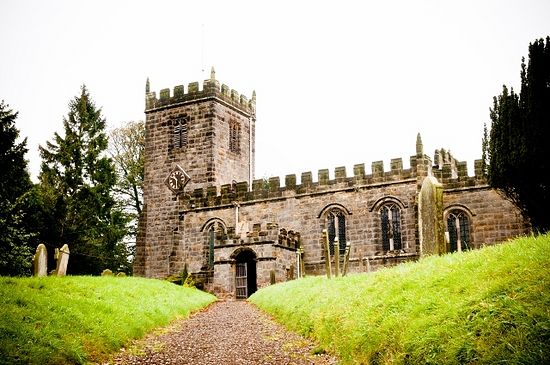
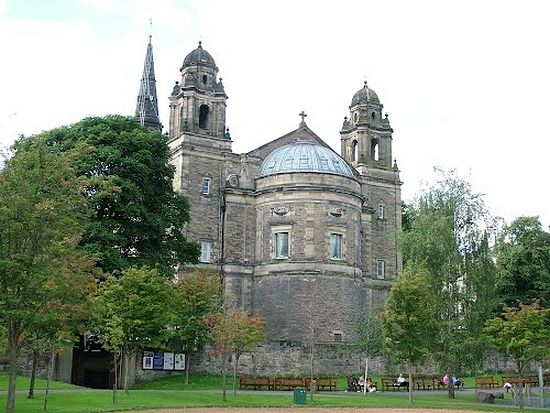

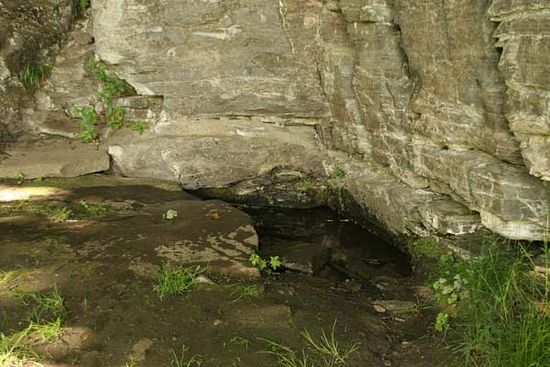
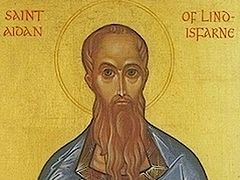
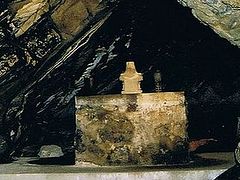
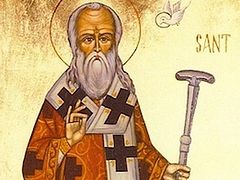
Thank you so much.